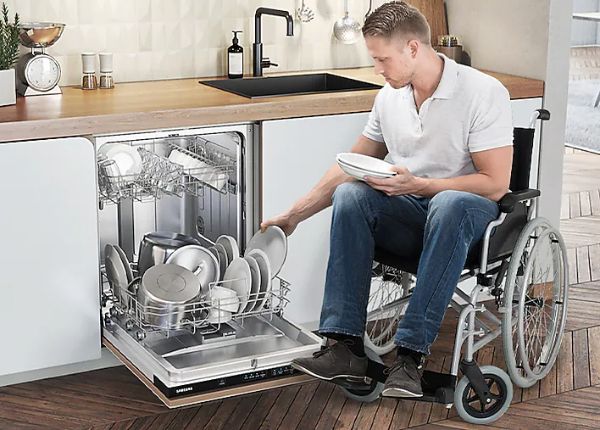When it comes to selecting a dishwasher for your kitchen, it’s important to consider various factors, including size, features, and accessibility. In particular, those with specific needs or limited mobility may find themselves torn between choosing an ADA dishwasher or a regular model.
In this article, we will explore the key differences between ADA dishwashers and regular dishwashers, highlighting the important aspects you should consider before making a decision.
Table of Contents
Understanding ADA Dishwashers
ADA stands for the Americans with Disabilities Act, a comprehensive law designed to ensure equal access and accommodation for individuals with disabilities. ADA dishwashers are specifically designed to meet the accessibility standards outlined in this legislation. They are intended to provide a more user-friendly experience for people with mobility challenges or disabilities.
Height and Design Considerations
One of the main differences between ADA dishwashers and regular dishwashers is their height and design. ADA dishwashers are typically lower in height, making them more accessible for individuals who use wheelchairs or have difficulty reaching higher shelves. These dishwashers are built to be installed at a lower height, allowing for easier loading and unloading of dishes without excessive bending or reaching.
User-Friendly Features
ADA dishwashers often include a range of user-friendly features that enhance accessibility and ease of use. These features may include controls positioned on the front of the unit for convenient access, larger buttons or touch controls for improved visibility and usability, and racks that can be adjusted to accommodate different sizes of dishes and cookware. These design elements make ADA dishwashers more accessible for individuals with limited dexterity or visual impairments.
Installation Flexibility
Regular dishwashers usually require a specific space and installation configuration, whereas ADA dishwashers offer more flexibility. ADA models can be installed under countertops or in a way that allows for easy access, even in kitchens with limited space. This versatility is especially valuable for individuals with mobility challenges, as it ensures that the dishwasher is within reach and easy to use.
Energy Efficiency and Environmental Considerations
Both ADA dishwashers and regular dishwashers can come in energy-efficient models, offering a variety of eco-friendly features. Energy Star certified dishwashers, for example, save water and electricity, reducing both utility bills and environmental impact. When comparing ADA and regular dishwashers, it’s essential to consider the energy efficiency ratings and environmental benefits to make an environmentally conscious choice.
Conclusion
Choosing the right dishwasher for your kitchen involves careful consideration of your specific needs and requirements. ADA dishwashers offer enhanced accessibility and user-friendly features, making them a suitable option for individuals with mobility challenges or disabilities. These dishwashers are designed to meet ADA standards and can significantly improve the ease and convenience of daily tasks. However, regular dishwashers still provide a reliable and efficient option for households without specific accessibility needs.
Ultimately, the decision between an ADA dishwasher and a regular model depends on your personal circumstances, available space, and preferences. It’s essential to evaluate the height, design, features, installation options, energy efficiency, and environmental considerations when making your choice. By considering these factors carefully, you can select a dishwasher that meets your needs, enhances your kitchen experience, and contributes to a more accessible and inclusive environment.

